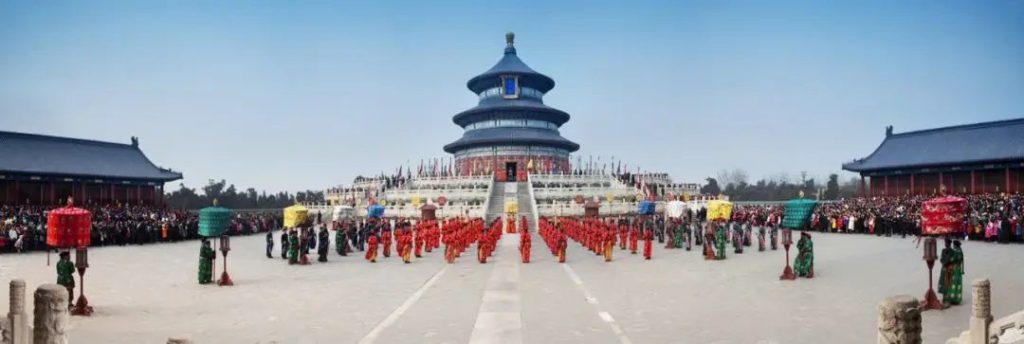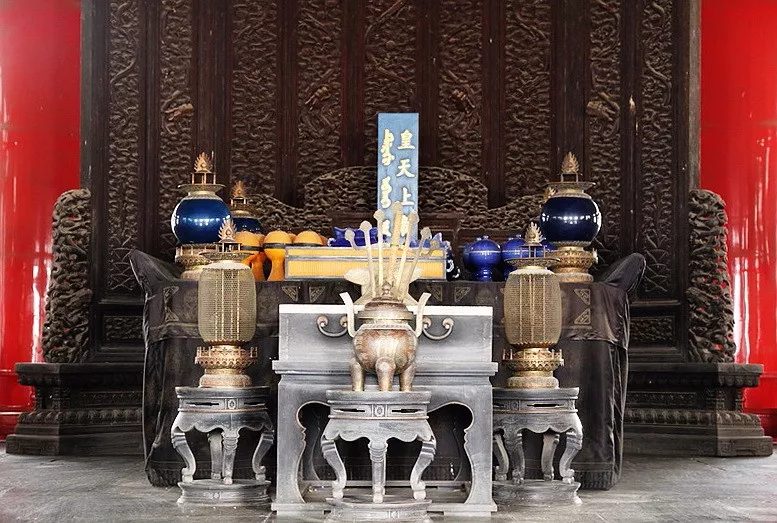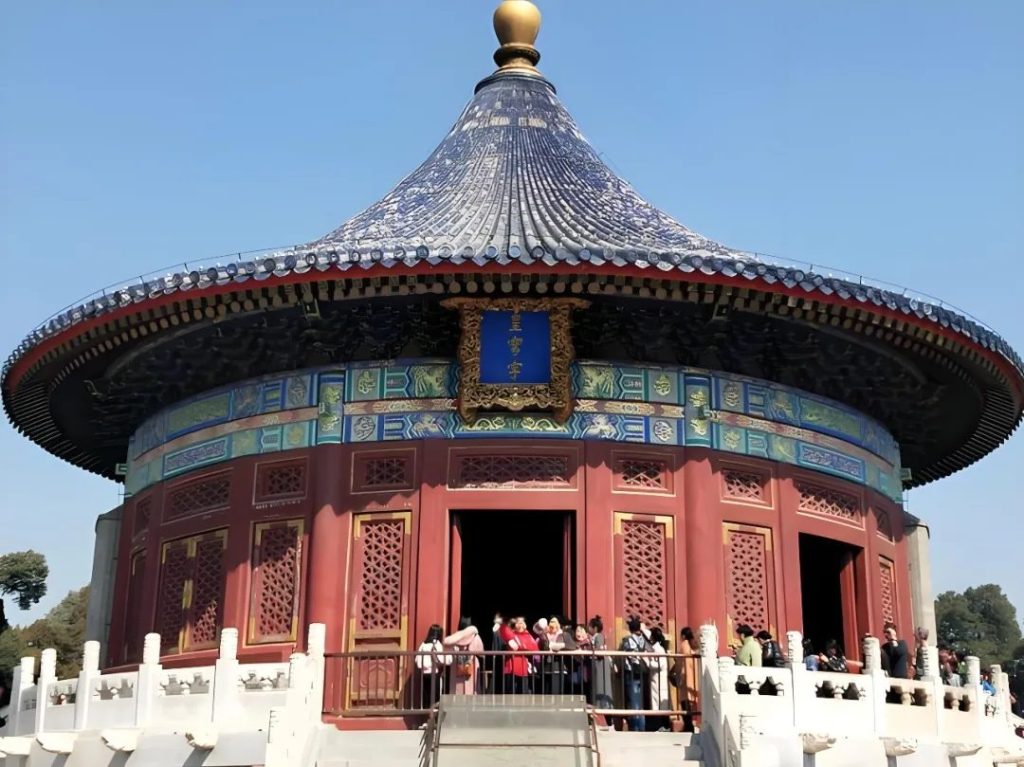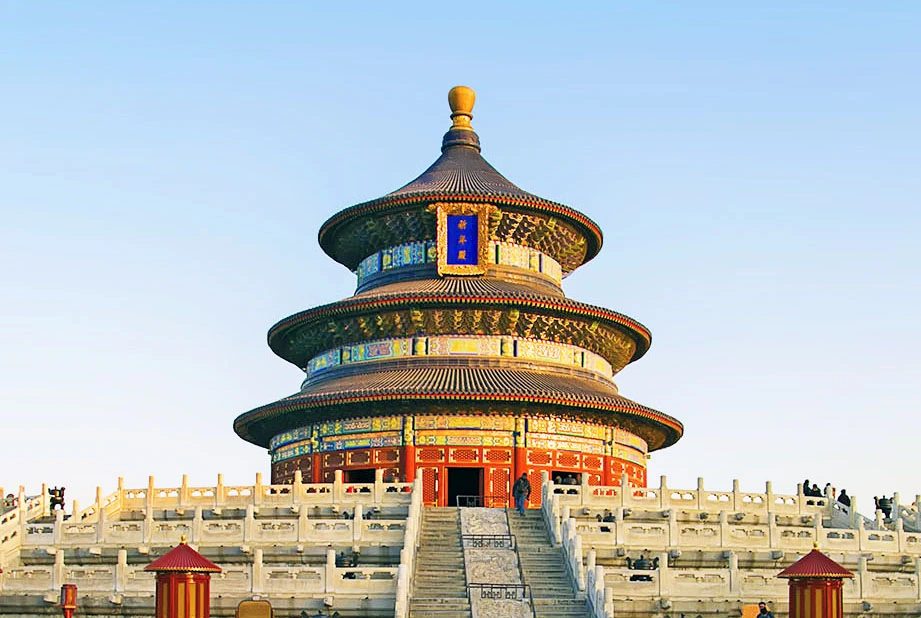The Temple of Heaven in Beijing, an ancient building full of historical flavor, is like an open history book, recording the stories of the past centuries.
It was built from the Ming Dynasty and has been preserved until now after many repairs and expansions during the Qing Dynasty, witnessing the changes of countless years.

The Temple of Heaven was the place where the emperors of the Ming and Qing dynasties held their ceremonies of praying for grain.
In ancient China, people lived mainly on agriculture and relied heavily on the weather.
It was felt that the heavens could determine the crops, so the emperors would pray to the heavens every year, hoping for favorable winds and rain and good crops.
This ceremony of praying for a good harvest is called the Ceremony of Praying for the Valley.
Architectural Style
The architectural style of the Temple of Heaven is very special, demonstrating the awesome and wisdom of ancient Chinese architecture. The whole layout is neat and looks very spectacular. The main buildings are Huanqiu, the Hall of Prayer for the Year of the Lord and the Imperial Vault, which are mostly round and square, reflecting the ancient idea of “heaven is round and earth is square”.

Hall of Prayer for the Year of the Dragon: it is a round building, the original roof tiles are green, yellow and green, representing the heaven and earth, and later changed to blue glazed tiles and gold roof. The Hall of Prayer for the Year of the Lord is a landmark of the Temple of Heaven and is very grand.
It is supported by 24 large pillars, which represent the 12 months and 12 hours of the year. Moreover, it is very finely crafted and beautifully decorated with colorful paintings and carvings on it.
Huanqiu: This is a round altar, open-air, with a three-tiered circular stone platform surrounded by nine circles of stone slabs. Standing on the Huanqiu, you will feel as if you can communicate with heaven and earth and feel that sacredness and solemnity. It is mainly built with Chinese white jade.
In the center of the Huanqiu there is a stone of the heart of heaven, and in the outer ring there are 81 masonry stones, representing the nine heavens.

The Imperial Vault: The inside of the Imperial Vault is gorgeously decorated and is the place where the gods are enshrined during rituals. It has a circular appearance and looks very round and harmonious.
The smallpox algal well inside the Imperial Vault is a large golden dragon algal well, which is very exquisite.
Jaegong: This is the place where the emperor fasted to show his respect and reverence for the heavens. It has a green roof, which also represents submission to the heavens.
In addition to these, there are also places such as the Flower Gate, the Ancient and Rare Gate, the Seventy-two Promenades, and the Kagura Agency.
Characteristic Highlights
The Temple of Heaven has many special features in addition to the building itself, which is very attractive.
Echo Wall: This is an acoustic wonder. If you stand in certain positions and clap your hands, you can hear three marvelous echoes, which is the magic of ancient architectural acoustics.
Cultural activities: The Temple of Heaven organizes various traditional cultural activities every year, so you can experience the charm of traditional Chinese culture first hand.
Natural scenery: There are many plants inside the Temple of Heaven, and the scenery is different in all seasons, making it a good place to take photos.
Opening Hours
Park: April to October, open at 6:00 a.m., close at 10:00 p.m.; November to March, open at 6:30 a.m., close at 10:00 p.m.
Attractions: April through October, opens at 8 a.m., closes at 5:30 p.m., closes at 6 p.m.; November through March, opens at 8 a.m., closes at 4:30 p.m., closes at 5 p.m. The attraction is closed every Monday (except legal holidays).
Admission Prices
High season (April 1 to October 31)
Grand admission ticket: 15 yuan
Combined ticket (including the Hall of Prayer for the Year of the Dragon, the Echo Wall and the Huanqiu): 34 RMB
Discounted tickets (for students and other specific groups): 7.5 yuan for the main ticket, 17 yuan for the joint ticket
Off-season (November 1 to March 31 of the following year):
Large ticket: 10 RMB
Combined ticket (including Hall of Prayer for the Year, Echo Wall and Huanqiu): 28 RMB
Discount ticket (for students and other specific groups): 5 yuan for the main entrance ticket, 14 yuan for the joint ticket
Transportation Guide
You can reach the Temple of Heaven conveniently through a variety of transportation methods.
Subway:
East Gate: Take Line 5 to the Temple of Heaven East Gate Station, and get out from Exit A to get there.
West Gate: Take Line 8 to Tianqiao Station, and walk for 5 minutes from Exit C.
South Gate: Take Line 14 to Jingtai Station, and walk 20 minutes from Exit C.
North Gate: It is recommended to take Line 7 to Qiaowan Station, and it is a 10-minute walk from Exit C.
Public transportation:
East Gate: You can take No. 6, No. 34, No. 35, No. 36, No. 39, No. 41, No. 43, No. 60, No. 72, No. 116, No. 128, No. 599 and get off at Fahuasi Station; or take No. 54, No. 957, No. 958 and get off at Tiantan Stadium Station.
South Gate: You can take No. 36, No. 53, No. 62, No. 122, No. 958, No. 141, No. 200 Inner Circle, No. 200 Outer Circle and get off at the Temple of Heaven South Gate.
West Gate: Take No. 2, No. 20, No. 36, No. 53, No. 71, No. 72, No. 90, No. 93, No. 120, No. 622, Bus Rapid Transit No. 1, No. 141 and get off at the West Gate of Temple of Heaven.
North Gate: You can take No. 6, No. 34, No. 35, No. 36, No. 72, No. 106, No. 110 and get off at the North Gate of Temple of Heaven.
Note
When visiting the park, please abide by the rules and regulations of the park and visit in a civilized manner.
